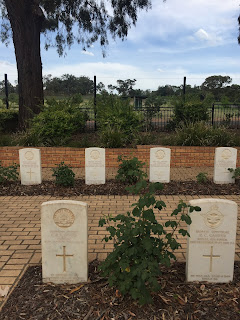It has been an incredibly busy week with complicated preparations for some of the missionaries now leaving to return home. The many different governmental and airline regulations due to Covid requirements change almost daily it seems, and we have to have all the documentation and apps downloaded that our released missionaries will need. We also had mission transfers and new arrivals this week which requires orientation. I generally give my presentation last since once the phones are set up, they do not really listen to anything else! I had several Humanitarian Projects to review this week in addition to helping our senior legal coordinator with a project. Don is in his office by 6:30 everyday and continues to handle a myriad of legal issues.
The mission office couples had our own little Thanksgiving dinner inviting the other senior couples to come. Nina Anderson-the master gardener as I call her-and I spearheaded the day. We labeled it a dinner of thanks so our Australian and Samoa friends wouldn't feel excluded in any way. They still called it their first American Thanksgiving. President and Sister Runia also came and said it was the first Turkey Day they have had in the two years they have been serving.
It was fun to prepare and share a few hours together. Just a small group, but wonderful friends which are each other's family while we are here. We added in the holiday "crackers" because . . . Why not? Since it is summer, there was not a lot of Autumn leaves, pumpkins and gourds. So we just got some greenery-eucalyptus leaves naturally- and some apples and pears for our centerpieces. A little ribbon with the jewel tone cloths and gold runners and we were there.
Nina and Mel Anderson, Elise and Ron Christensen, Mike and Theresa Thomas and our mission president and wife, Tammy and Scott Runia all pictured. Interestingly, all of them are from the Wasatch Front area in Utah. Wherever we go, we are asked where we live in the US. And we always have to give a geography lesson about where Lewiston, Idaho is located. No, it is not in Cache Valley, Utah near Preston. (That's Lewiston, Utah). No, northern Idaho is not Rexburg either. Yes, the Snake River flows north and we do cross it every week to attend our church meetings in Washington.
We started looking around Cowra by seeing the Australia's World Peace Bell. It's a replica of the one in front of the United Nations in New York and is the only one in the world found in such a small town as they are generally awarded to capital cities. Yet, Cowra's dedication to bring peace to the world and increase international understanding was recognized with this honor.
We drove up Billy Goat Hill to view the city and look over the valley. Then we drove to the Japanese Gardens and strolled past the ponds, manicured gardens, and little streams. Though it was a 100 degree day, we walked through the 12 acre park and loved the beauty evident all around us.
The gardens were established to continue the relationship first developed between Japan and the Cowra Shire following World War II. Design features of the garden follow some of the earliest Japanese strolling gardens. There is a tea house and the Edo Cottage where traditional Japanese ceremonies are held regularly though not on the day of our visit.
The real genesis of the Japanese relationship to the people of Cowra began during World War II. We were able to visit the grounds of the POW camp where ruins are still visible. Like the US, Australia housed their Japanese citizens in this area as an internment camp first. But later, it became a camp for Italian POWs captured in North Africa. Then, Japanese and Indonesian prisoners were included.
Entrance to Japanese War Cemetery
Next to the Japanese Cemetery is the Australian War Cemetery which contains the graves of servicemen who died at the nearby Cowra Military Training Camp and the Australians killed during the mass escape.
Australia War Cemetery
Middle graves are those Australians who died during the Breakout
I loved seeing the aboriginal paintings on the bridge pylons by the Lachlan River. They were designed and painted by a local aboriginal artist and depict scenes of local animals, landscapes, and the Wiradjuri people whose lands the English settled on after their arrival in the late 1700's.
Cowra had a lovely small art gallery we visited and found people would stop us on the street to ask where we were from. A wonderful little town to visit after such a hectic week. We even stayed at the Breakout Motel!

























I particularly loved two things in this post:
ReplyDelete1. That you are again involved in humanitarian work (she that has desires is called to the work)
and 2. you are soooo right about the phones!